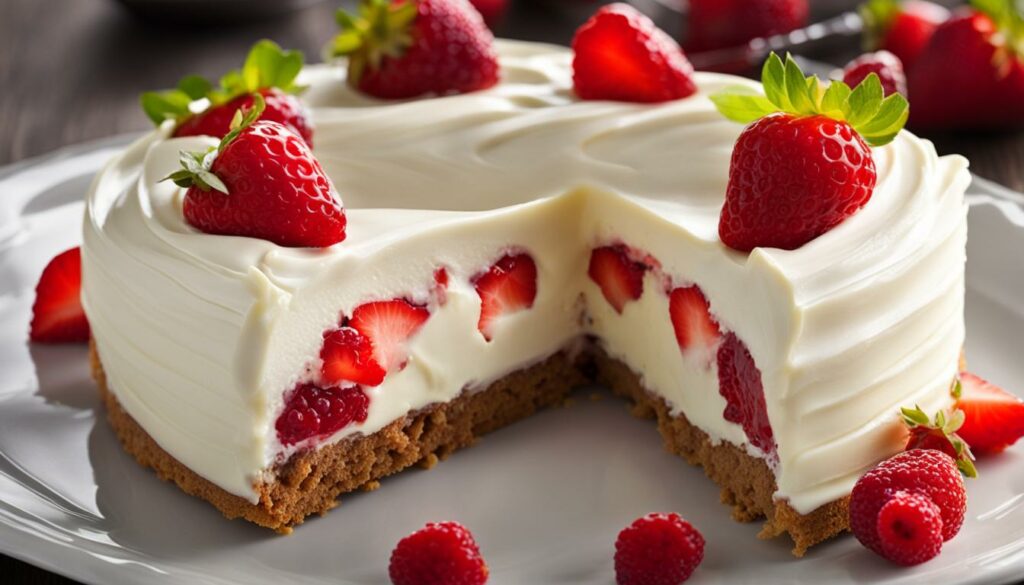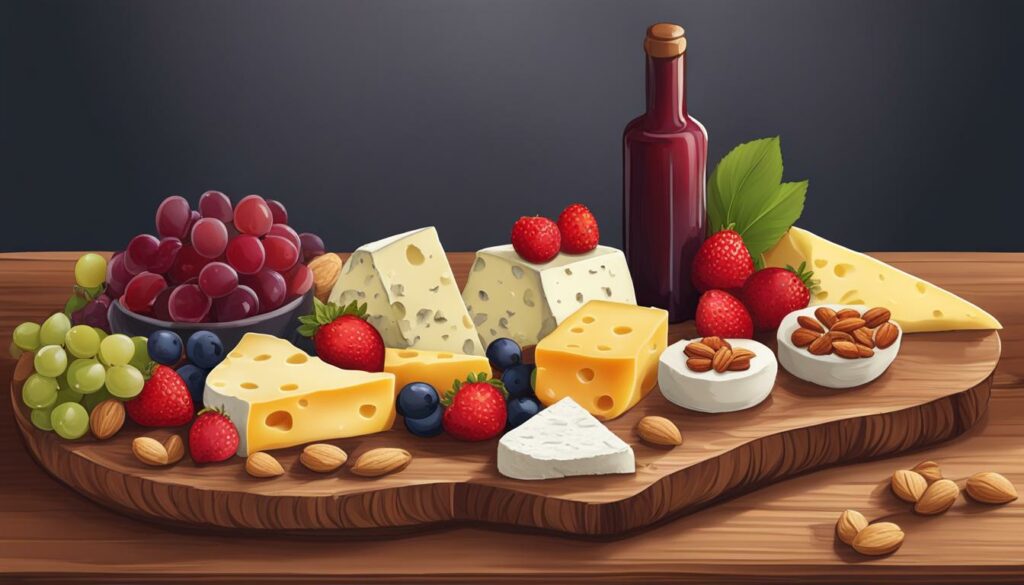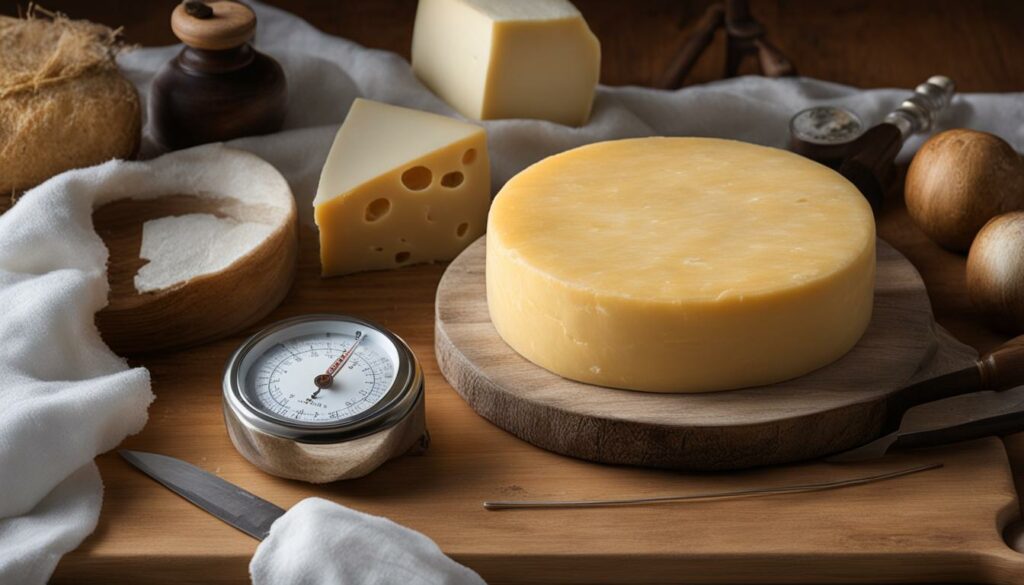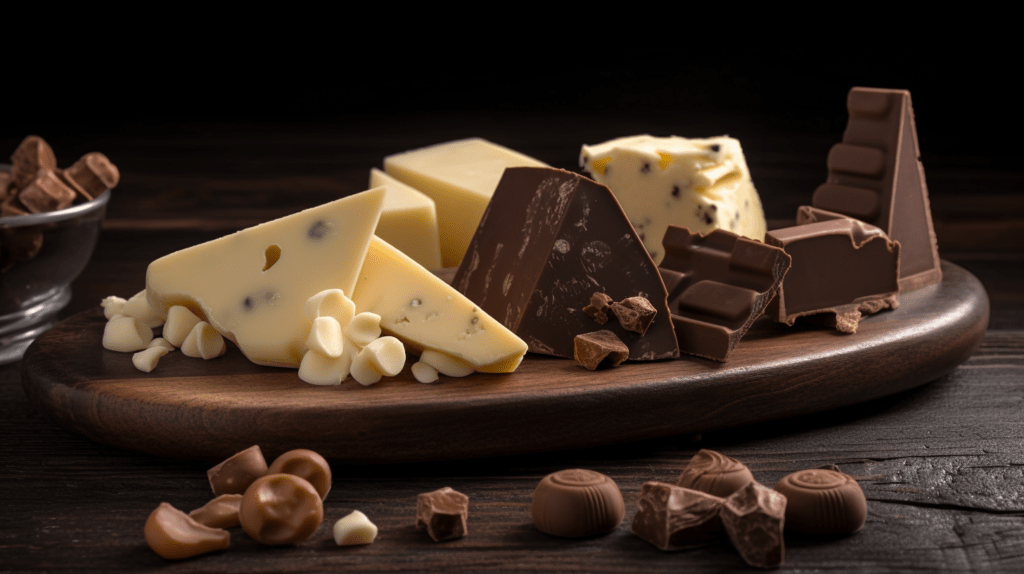Welcome to the world of cream cheese! In this article, we will delve into the creamy delights of cream cheese and explore its various forms and flavors. Whether you enjoy it as a spread, a dip, a frosting, a filling, or in a dessert, cream cheese is a versatile ingredient that can elevate any dish from ordinary to extraordinary.
Are you looking for new and exciting ways to incorporate cream cheese into your recipes? We’ve got you covered! From mouthwatering cream cheese spreads to delectable flavored cream cheese options, the possibilities are endless. Our collection of cream cheese recipes will inspire your culinary creativity and satisfy your taste buds.
Do you want to impress your guests with an irresistible cream cheese appetizer or snack? Look no further! We’ll share with you some delightful and easy-to-make cream cheese-based appetizers and snacks that will leave everyone craving more.
And of course, we can’t forget about everyone’s favorite cream cheese dessert – cheesecake! Discover the secrets to a perfect cheesecake, from setting up a water bath to preventing those dreaded cracks. We’ll provide you with all the tips and tricks to ensure your cheesecake turns out smooth, creamy, and utterly delicious.
So, whether you’re a cream cheese connoisseur or just starting your love affair with this velvety delight, our guide to cream cheese will take your culinary creations to the next level. Let’s embark on this flavorful journey together!
What is Cream Cheese?
Cream cheese is a soft and creamy dairy product made from a blend of milk, cream, and lactic acid bacteria. It is a popular ingredient in both sweet and savory dishes due to its tangy flavor and smooth texture. With its high-fat content, cream cheese adds richness and depth to any recipe it is used in.
If you’re wondering about the production process, cream cheese starts with milk and cream, which are fermented with lactic acid bacteria. This process gives cream cheese its distinctive tangy taste. The result is a versatile ingredient that can be spread on bagels, used in dips and frostings, or incorporated into various recipes to add a creamy touch.
The History of Cream Cheese
Cream cheese has a rich history that dates back to the early 16th century. It is believed to have originated in England, but it wasn’t until the late 1800s that cream cheese, as we know it today, was created by an American dairyman named William Lawrence.
“I invented cream cheese in 1872,” said William Lawrence, reflecting on his creation. “I found that by adding cream to the cheddaring process, I could create a cheese with a smooth and spreadable texture.”
Initially considered a luxury item, cream cheese became widely available to the public when Kraft Foods started mass-producing it in 1872.
Since then, cream cheese has become a staple in many households and has evolved to cater to various preferences and dietary needs. Today, you can find cream cheese in a myriad of flavors, ranging from classic plain to savory options like herb and garlic. Additionally, there are organic options available for those seeking a more natural and sustainable choice.
Explore the delicious world of cream cheese and its many possibilities in the next section.

Flavors and Organic Options
Cream cheese has come a long way since its humble beginnings. Now, you can find a wide range of flavors to suit your taste preferences. Whether you prefer a classic plain cream cheese or want to explore bolder options like strawberry or everything bagel, there is a flavor for everyone.
For those seeking a more natural and sustainable choice, organic cream is available. Made from organic milk and produced without the use of synthetic additives or pesticides, organic cream cheese offers a wholesome option for conscious consumers.
You can easily incorporate these flavorful cream cheese options into a variety of dishes, from spreading it on bagels to using it as a base for creamy dips and frostings.
Cream Cheese Flavors and Organic Options
| Flavor | Description |
|---|---|
| Plain | The classic, creamy option with a tangy flavor. |
| Strawberry | A sweet and fruity cream cheese with swirls of strawberry. |
| Garlic and Herb | A savory blend of garlic, herbs, and cream cheese. |
| Everything Bagel | A delightful combination of cream cheese and the flavors of an everything bagel. |
| Organic | Made from organic milk without synthetic additives or pesticides. |
Now that you have learned about the origins of cream cheese and the variety of flavors and organic options available, it’s time to discover how to make homemade cream cheese in the next section.
Making Cream Cheese at Home
Making cream cheese at home is a rewarding and straightforward process. You can create your own smooth and creamy homemade cream cheese with just a few ingredients: milk, cream, and an acid like lemon juice or vinegar. By following these simple steps, you’ll have delicious cream cheese that you can customize to your taste.
- Heat the milk and cream: Start by heating the milk and cream in a saucepan over medium heat. Stir occasionally to prevent scorching.
- Add the acid: Once the mixture reaches a gentle simmer, remove it from the heat and add your chosen acid, such as lemon juice or vinegar. Stir well to combine.
- Allow separation: Let the mixture sit undisturbed for about 10 minutes. During this time, the acid will cause the mixture to separate into curds and whey.
- Strain and blend: Line a colander or fine-mesh sieve with cheesecloth and place it over a bowl. Gently pour the curdled mixture into the lined colander, allowing the whey to drain away. Once the whey has drained off, gather the edges of the cheesecloth and gently squeeze to remove any remaining liquid. Transfer the curds to a food processor or blender and blend until smooth and creamy.
- Customize and refrigerate: At this point, you can add any additional flavors or seasonings to your homemade cream cheese, such as herbs, spices, or even sweet ingredients like honey or fruit preserves. Once you’re satisfied with the taste, transfer the cream cheese to a container, cover it, and refrigerate for a few hours to allow it to firm up.

By making cream cheese at home, you have the advantage of controlling the quality of the ingredients and the flavors. Enjoy the smooth and creamy result of your homemade cream cheese on bagels, sandwiches, or as a delicious topping for desserts. The possibilities are endless!
Tips for Perfect Cheesecake
Cheesecake is a beloved dessert that many people enjoy, but it can be tricky to get perfect. To ensure a creamy and smooth cheesecake, there are a few key tips to keep in mind.
1. Use a Water Bath
Using a water bath while baking your cheesecake helps create a moist and even texture. Place your cheesecake pan in a larger pan filled with hot water. This gentle heat and humidity will prevent the cheesecake from drying out and minimize the chances of cracking.
2. Avoid Overbaking
Overbaking can result in a dry and dense cheesecake. To avoid this, remove the cheesecake from the oven when the outer edge is slightly puffed and set, but the center still has a slight jiggle. The residual heat from the pan will continue to cook the center, resulting in a perfectly creamy texture.
3. Slow Cooling and Proper Chilling
After removing the cheesecake from the oven, allow it to cool gradually on a wire rack or stovetop. This slow cooling process prevents sudden temperature changes that can cause cracking. Once cooled, refrigerate the cheesecake for at least a few hours, or preferably overnight, to allow it to set up and develop its desired velvety consistency.
Pro Tip: For a neat finish, run a thin-bladed knife around the edge of the cheesecake before releasing it from the pan.
By following these tips, you’ll be able to create a cheesecake with a creamy, smooth texture and irresistible flavor.

| Tips for Perfect Cheesecake |
|---|
| Use a Water Bath |
| Avoid Overbaking |
| Slow Cooling and Proper Chilling |
Ingredients for Perfect Cheesecake
Creating a perfect cheesecake requires a careful selection of ingredients that contribute to its rich and creamy texture. The key components that ensure a velvety and delectable result are cream cheese, sour cream, eggs, and a small amount of cornstarch.
1. Cream Cheese: Cream cheese serves as the foundation for a delicious cheesecake. Its smooth and creamy consistency provides a luscious base that melts in your mouth. Choose a high-quality cream cheese brand for the best results.
2. Sour Cream: Adding sour cream to your cheesecake recipe brings a tangy and velvety element to the dessert. It contributes moisture and enhances the overall flavor profile, resulting in a creamy and decadent treat.
3. Eggs: Eggs play a crucial role in binding the ingredients together and creating a smooth and cohesive texture. They add richness and structure to the cheesecake, ensuring a delightful balance of flavors.
4. Cornstarch: Adding a small amount of cornstarch to the cheesecake mixture acts as a stabilizer, preventing cracks and ensuring a smooth and easy-to-slice dessert. It enhances the overall texture and consistency of the cheesecake.
By combining these ingredients in the right proportions, you can achieve a perfectly creamy and tantalizing cheesecake that will impress your guests or simply satisfy your sweet tooth.

Setting Up a Water Bath
One essential technique for baking a perfect cheesecake is setting up a water bath. This method creates a steamy environment that helps cook the cheesecake gently and prevents the surface from drying out. A water bath ensures a creamy texture and reduces the risk of cracks, resulting in a flawlessly smooth and delicious dessert.
- Start by wrapping the springform pan with aluminum foil. This step is crucial to prevent water from seeping into the pan during the baking process.
- Place the wrapped pan inside a larger baking dish or roasting pan. Ensure that the dish or pan is deep enough to hold a few inches of water without overflowing.
- Fill the larger dish or pan with hot water until it reaches about halfway up the sides of the springform pan. The water should not touch the top of the foil.
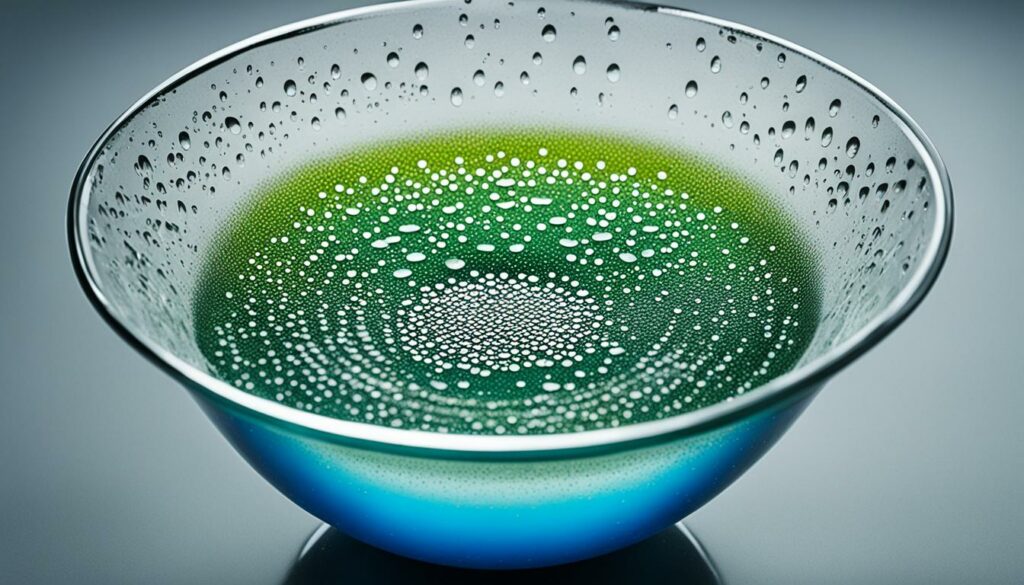
By creating a water bath, you provide a steamy and moist environment that surrounds the cheesecake during baking. This gentle heat prevents the cheesecake from drying out, resulting in a creamy and velvety texture. It also helps distribute the heat evenly, ensuring that the cheesecake bakes uniformly.
Expert Tip:
Make sure to check the water level during the baking process and add more hot water if needed.
Water Bath vs. Direct Baking
The water bath method offers several advantages over direct baking. Without a water bath, the cheesecake is more prone to cracking due to the rapid temperature changes in the oven. Additionally, the steam created by the water bath adds moisture to the oven, reducing the risk of the cheesecake top drying out and forming an unattractive crust.
| Water Bath Method | Direct Baking Method |
|---|---|
| Helps prevent cracks | Increased risk of cracks |
| Creates a moist and creamy texture | Potential dryness |
| Even baking and consistent heat distribution | Uneven baking, especially near the edges |
As demonstrated in the table above, the water bath method provides superior results, ensuring a perfectly baked cheesecake with a silky smooth texture.
Preventing Cheesecake Cracks
Cheesecake cracks can be a common problem when baking this delightful dessert. However, by following a few important steps, you can ensure a crack-free result. By avoiding overcooking, allowing gradual cooling, and taking some additional precautions, you’ll be able to enjoy a perfectly smooth and velvety cheesecake.
First and foremost, make sure you don’t overcook your cheesecake. It’s crucial to remove it from the oven when the outer ring is set but the center still jiggles slightly. Overcooking can cause the cheesecake to dry out and develop cracks.
Rapid cooling can also be a culprit for cheesecake cracks. Instead of removing the cheesecake from the oven right away, let it rest in the turned-off oven with the door cracked open for about an hour. This slow cooling process allows the cheesecake to adapt to the changing temperature gradually, reducing the risk of cracks forming.
To further ensure a crack-free cheesecake, run a thin-bladed knife around the edge of the pan before removing it. This step helps prevent the cheesecake from sticking to the sides, which could lead to cracks when it contracts during cooling.
Finally, after the cheesecake has cooled down on the stovetop, please place it in the refrigerator for several hours or overnight. The gradual cooling and firm chilling will help the cheesecake set properly and develop its desired texture and creaminess.
Summary:
- Avoid overcooking the cheesecake.
- Allow the cheesecake to cool gradually by resting it in the turned-off oven for about an hour with the door cracked open.
- Run a thin-bladed knife around the edge of the pan to prevent sticking.
- Chill the cheesecake in the refrigerator to ensure it sets properly.
By following these preventative measures, you’ll be able to savor a crack-free cheesecake that is sure to impress your taste buds and guests alike.
| Steps | Description |
|---|---|
| Avoid Overcooking | Remove the cheesecake from the oven when the outer ring is set but the center still jiggles slightly. |
| Gradual Cooling | Let the cheesecake rest in the turned-off oven with the door cracked open for about an hour to cool slowly. |
| Knife Around the Edge | Run a thin-bladed knife around the edge of the pan to prevent the cheesecake from sticking and cracking. |
| Proper Chilling | Refrigerate the cheesecake for several hours or overnight to allow it to set properly. |
Remember, taking these precautions will help you achieve a flawless cheesecake with a smooth and creamy texture. Now you can confidently create stunning cheesecakes without the worry of cracks.
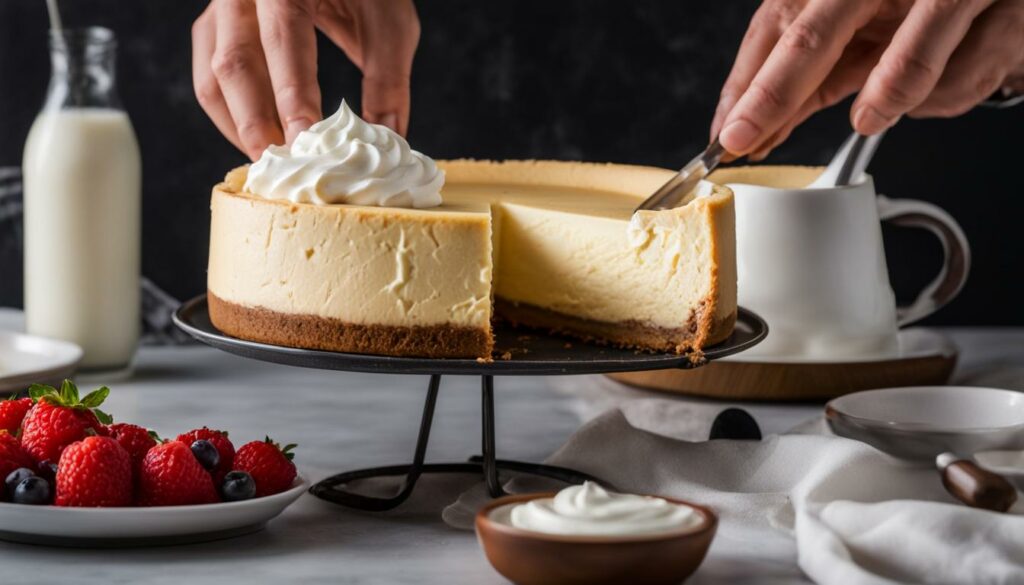
The Importance of Chilling Cheesecake
Chilling the cheesecake is a crucial step in the process that allows it to fully set and develop its desired texture and creaminess. While the cheesecake may appear firm after baking, it will have a custardy texture if sliced too soon. By chilling the cheesecake in the refrigerator for at least four hours, or ideally, overnight, it transforms into a smooth and velvety delight that is perfect for serving.
When the cheesecake is chilled, it gains firmness and stability, allowing for clean and precise slices. Chilling also enhances the texture, giving the cheesecake a denser consistency and a creamy mouthfeel. This firmness is essential in maintaining the delicate layers and structure of the cheesecake, ensuring a pleasing visual presentation.
“Through the process of chilling, the cheesecake becomes a masterpiece of texture and creaminess, delighting both the eyes and taste buds.”
In addition to improving the texture and firmness, chilling the cheesecake also allows the flavors to meld together, creating a harmonious taste experience. The cool temperature intensifies the creaminess and enhances the overall flavor profile of the cheesecake. Whether you’re enjoying a classic New York-style cheesecake or a delightful fruity variation, chilling takes the flavor to the next level.
| Benefits of Chilling Cheesecake: | Chill | Firmness | Texture | Creaminess |
|---|---|---|---|---|
| Enhances the flavors | ✓ | |||
| Creates a denser consistency | ✓ | ✓ | ✓ | |
| Maintains the delicate structure | ✓ | |||
| Improves visual presentation | ✓ |
So, resist the temptation to slice into your freshly baked cheesecake right away. Exercise patience and give it the time it deserves to chill in the refrigerator. The result will be a cheesecake with a firm yet creamy texture that melts in your mouth, leaving you craving for more.
Conclusion
Cream Cheese cheese is a versatile and beloved ingredient that will elevate your culinary creations. Whether you’re looking to whip up a creamy spread or dip or indulge in a decadent cheesecake, cream cheese is the star of the show. By following the recipes and cooking tips shared in this article, you’ll be able to harness the full potential of cream cheese and create delicious dishes that will impress your family and friends.
Experiment with different flavors and variations of cream cheese to add a unique twist to your recipes. From savory herb-infused spreads to dreamy fruit-flavored cheesecakes, there is no limit to the creativity you can achieve with cream cheese. Don’t be afraid to explore and try out new ideas in the kitchen – the rich and tangy essence of cream cheese will always be there to enhance your dishes.
Now is the time to embark on your cream cheese adventure. Unleash your culinary skills and enjoy the velvety bliss that homemade cream cheese brings to your cooking. With every bite, you’ll savor the creamy texture and tangy flavor that cream cheese adds to your favorite meals. So, gather your ingredients, follow the tips and recipes provided, and let the magic of cream cheese elevate your culinary creations to new heights. Happy cooking!
FAQ
What is cream cheese?
Cream cheese is a soft and creamy dairy product made from a blend of milk, cream, and lactic acid bacteria. It has a smooth texture and a tangy flavor that makes it a popular ingredient in both sweet and savory dishes.
How did cream cheese originate?
Cream cheese is believed to have originated in England in the early 16th century. However, the cream cheese we know today was created by an American dairyman named William Lawrence in the late 1800s. It became widely available when Kraft Foods started mass-producing it in 1872.
Can I make cream cheese at home?
Yes! You can make cream cheese at home by curdling a mixture of milk, cream, and an acid like lemon juice or vinegar. Heating the mixture, adding the acid, and then straining and blending the curds will result in a smooth and creamy homemade cream cheese.
What are some tips for making a perfect cheesecake?
To ensure a perfect cheesecake, use a water bath while baking to create a moist and even texture. Avoid overbaking by removing the cheesecake from the oven when the outer ring is slightly puffed but the center still jiggles. Slow cooling and proper chilling in the fridge allow the cheesecake to set up and develop its desired velvety consistency.
What are the key ingredients for a perfect cheesecake?
The key ingredients for a perfect cheesecake include cream cheese, sour cream, eggs, and a small amount of cornstarch. Cream cheese provides a rich and creamy base, sour cream adds tanginess and moisture, eggs help bind the ingredients together, and cornstarch acts as a stabilizer to prevent cracking.
How do I create a water bath for baking cheesecake?
To create a water bath, wrap the pan with the cheesecake in aluminum foil to prevent water from seeping in. Place the wrapped pan in a larger baking dish or roasting pan and fill it with a few inches of water. This steamy environment helps cook the cheesecake gently and prevents the surface from drying out.
How can I prevent cracks from forming on my cheesecake?
Prevent cheesecake cracks by avoiding overcooking it. Remove the cheesecake from the oven when the outer ring is set but the center still jiggles slightly. Rapid cooling can also cause cracks, so let the cheesecake rest in the turned-off oven with the door cracked for about an hour before removing it from the water bath. Finally, allow the cheesecake to cool gradually on the stovetop before chilling it in the fridge.
Why is chilling the cheesecake important?
Chilling the cheesecake is crucial for it to set and develop its desired texture and creaminess. While the cheesecake may appear firm after baking, slicing it too soon will result in a custardy texture. By chilling the cheesecake in the refrigerator for at least four hours, or ideally, overnight, it transforms into a smooth and velvety delight that is perfect for serving.
How can I incorporate cream cheese into my cooking?
Cream cheese is a versatile ingredient that can be used in a variety of ways. You can spread it on toast or bagels, use it as a dip or frosting, add it to various recipes for a creamy and tangy flavor, or even enjoy it as a filling in desserts. The possibilities are endless!
Are there any cream cheese recipes available?
Absolutely! There are countless cream cheese recipes available, ranging from appetizers and snacks to main dishes and desserts. Whether you’re craving a savory dip, a luscious cheesecake, or a creamy pasta sauce, there is a cream cheese recipe to suit your taste and culinary preferences.

